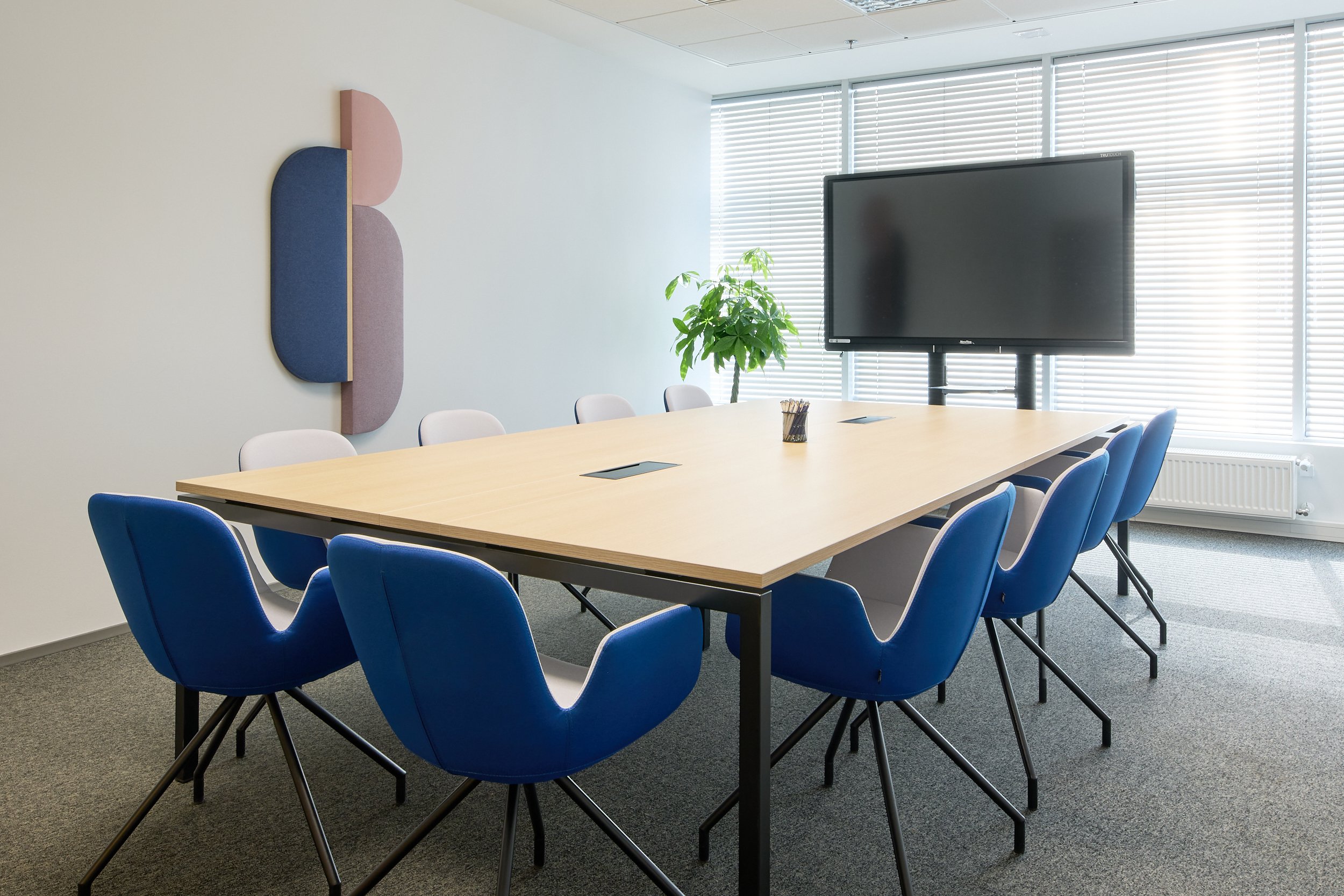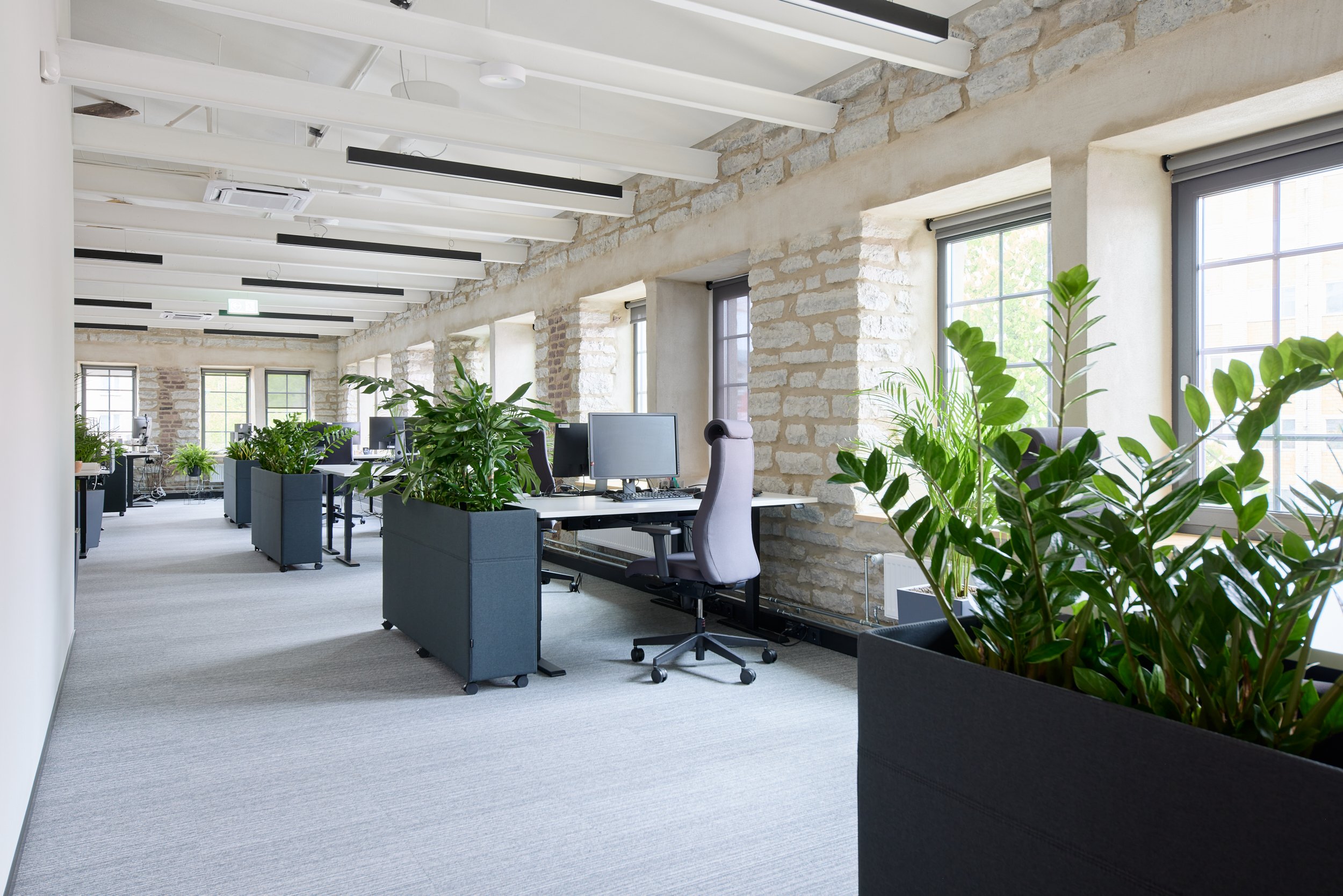When designing an office to be more environmentally friendly, it is worth thinking about the well-being and productivity of employees in addition to energy costs. The so-called green offices are more employee-friendly already since they have better air quality and lower energy consumption than regular offices.
In order to make the office more environmentally friendly, there are actually many more options than you might think. You can think about interior design, lighting or recycling. Here are some suggestions on how to achieve all this.
The office should be material efficient
Effective use of material is crucial in the construction of every environmentally friendly building and office. This means choosing materials that are sustainable for both outdoor and indoor use, with lower volatile organic compound or VOC content, or the use of a lot of recycled materials in their production.
For example, the small meeting rooms of Health and Welfare Information Systems Center (TEHIK), which is furnished by OCCO, have acoustic wall panels made of recycled materials. The panels are made from used water bottles or pine needles and can also be used as dividing panels between office desks to create privacy.
Various wood textures, such as wooden ceiling or wall panels, make the office space closer to nature and more environmentally friendly. In addition to the fact that wood is a renewable and recyclable material, it adds warmth and coziness to the room.

Natural light increases productivity
Researchers at Harvard University discovered that people working in an eco-friendly office are more than twice as productive as those in regular offices. This was partly due to the increase in natural lighting in the office building.
Natural light in an environmentally friendly office has a positive effect on employees and their health. It can also have a positive impact on energy use, as artificial lighting can be reduced throughout the building.
Natural light can be increased by adding more windows (if possible, also on the roof). Glass walls or the absence of partitions can help maximize natural light in an office interior. Placing work areas closer to natural light sources can also help.
Combine the old with the new
A truly responsible office should make sure that as much as possible is recycled. Recycling is a great way to promote sustainability as it saves resources, prevents pollution and avoids landfilling.
For example, if the office is moved to a new location, it is welcome to match the old usable furniture with the new one. In this way, we give the furniture a new life and prevent it from ending up in the landfill. For example, when OCCO’s client Stell was furnishing their office, they requested from us to use as much existing furniture as possible for the sake of sustainability and to integrate it with the new one.

Hot desking, the smart use of space
If the office space tends to become cramped due to rapid growth and all employees no longer have a daily desk, it makes sense to use hybrid and remote work options. In this way, it is possible to use the office space wisely without burdening all the rooms with standing desks.
Depending on the nature of each company and the regularity of employees visiting the office, it can be decided who gets their own desks and who uses shared desks.
Occasional office workers can also have lockers in the corridors, where they can leave their own keyboard, coffee cup or slippers, so that they don’t have to carry these things with them, but it would still be nice to have in the office.”
Closeness to nature and biophilia
Exposure to nature during work hours improves health and well-being more than viewing nature from indoors, and is associated with lower stress levels. So make sure that there is enough greenery in the form of different plants in your workplace.
In addition to relieving stress, plants purify the air and contribute to productivity and creativity. Instead of classic potted plants, it is possible to use plants, for example, in hanging flowerpots in office recreation areas and meeting rooms. A clever trick is to use greenery as room dividers by planting suitable plants in plant boxes.

There are no trash cans under the desks
Most of the waste generated in the office – paper, tetrapacks – can be recycled, and food waste and paper towels can be composted. However, if we think about whether to throw our trash in an individual trashcan or to get up to throw it in a separate sorting trash can, we will most likely choose the fastest and closest option, because the trash can is right there under the desk.
But by using only sorting bins and placing them in selected places, for example near the kitchen and dining areas, we also encourage the moving of employees.
Go paperless
Many office workers know what it means when the printer runs out of paper at the wrong moment. In fact, instead of constantly printing something out at the printer, you could think of the company becoming paperless and sharing the necessary files on a screen during the meeting, sending them to the participants via e-mail or uploading them to the common cloud.
But if you really can’t go completely paperless, then you could think about printing on both sides of the paper next time.



